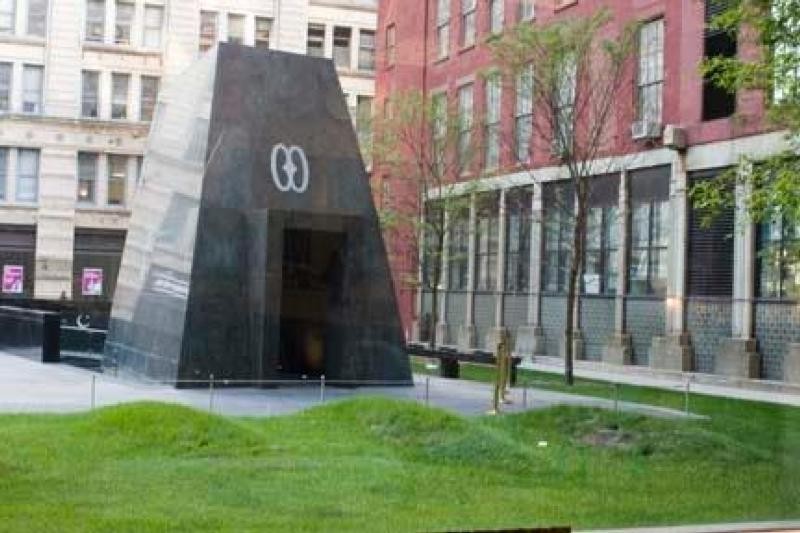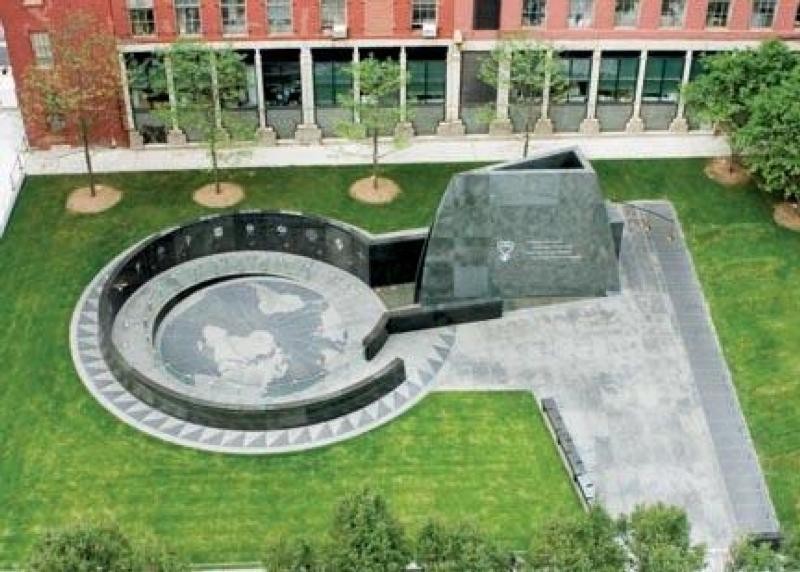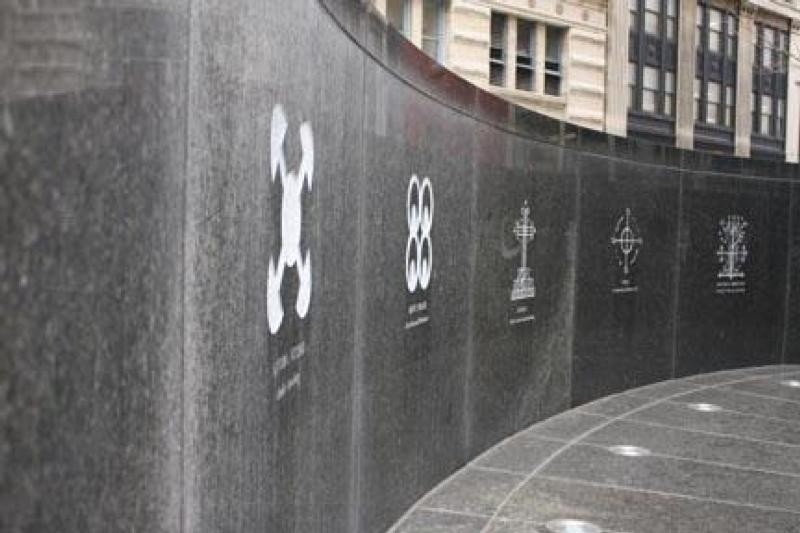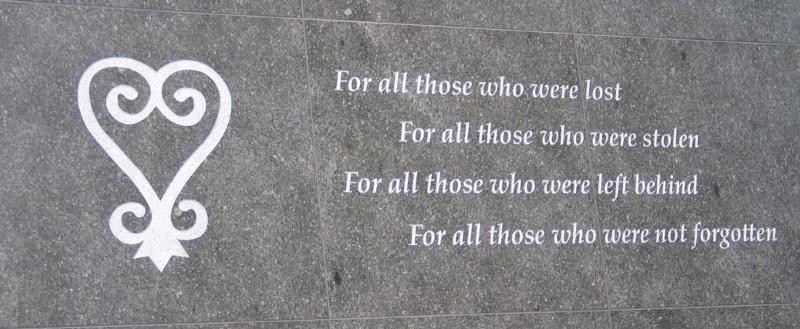African Burial Ground National Monument
Introduction
Text-to-speech Audio
Images
A photo of the memorial at the burial ground.

African Burial Ground national Monument-aerial view. The circle in the center of the mountebank represents a sunken Libation Court (gathering space for cultural ceremonies).

The monument is surrounded by a Circle of the Diaspora inscribed with signs, symbols, and images of the African Diaspora.This Ancestral Wall inside the monument contains rich cultural symbolism.

Adinkra symbol for Sankofa.

Backstory and Context
Text-to-speech Audio
The African Burial Ground is one the most important archaeological finds of the 20th century. Known as the earliest African American burial site in the United States, it is an important reminder of a dark and often forgotten period in New York City history. From the 1690s until 1794, about 15,000 free and enslaved Africans were buried on this 6.6-acre burial ground, stacked layer upon layer. The graves were unmarked and eventually covered over by a landfill. During the 17th and 18th centuries, Africans were forbidden to bury their dead in officially consecrated graveyards such as in nearby Trinity Church. The African Burial Ground is a place that tells the story of a people, their struggle for freedom, and their immeasurable contributions to a city and a nation.
Nearly two decades have been dedicated to discovery of the land. The scientific research was organized and directed by Howard University. The project team unearthed more than 400 skeletal remains of men, women, and children. They were reburied on October 4, 2003.
Today, an outdoor memorial designed by Rodney Leon was dedicated during the memorial dedication weekend from October 5 to October 7, 2007. It is a living tribute to past, present and future generations of Africans and African descendants. A Visitor Center, opened in 2010, and exhibition space on the ground floor of the Ted Weiss Building includes exhibits about the history of the cemetery and the African contribution to the building of early New York City.
The site was designated a National Historic Landmark in April 1993, memorializing the ongoing struggles of enslaved Africans. On February 26, 2006, President George W. Bush declared the African Burial Ground a National Monument.
Cite This Entry
Linsenmeyer, Michael et. al. "African Burial Ground National Monument." Clio: Your Guide to History. March 5, 2017. Accessed April 1, 2025. https://theclio.com/tour/1872/1
Sources
African Burial Ground Discovery Rewrites History of American Slavery. Advisory Council on Historic Preservation. Accessed March 04, 2017. http://www.achp.gov/docs/Section106SuccessStoryABGv5.pdf.
African Burial Ground National Monument Long-Range Interpretive Plan. National Park Service. Accessed March 04, 2017. http://www.nps.gov/hfc/pdf/ip/AFBG_LRIP.pdf.
US Department Of the Interior. African Burial Ground: A Sacred Space in Manhattan. National Park Service. Accessed March 04, 2017. http://www.nps.gov/afbg/index.htm.

